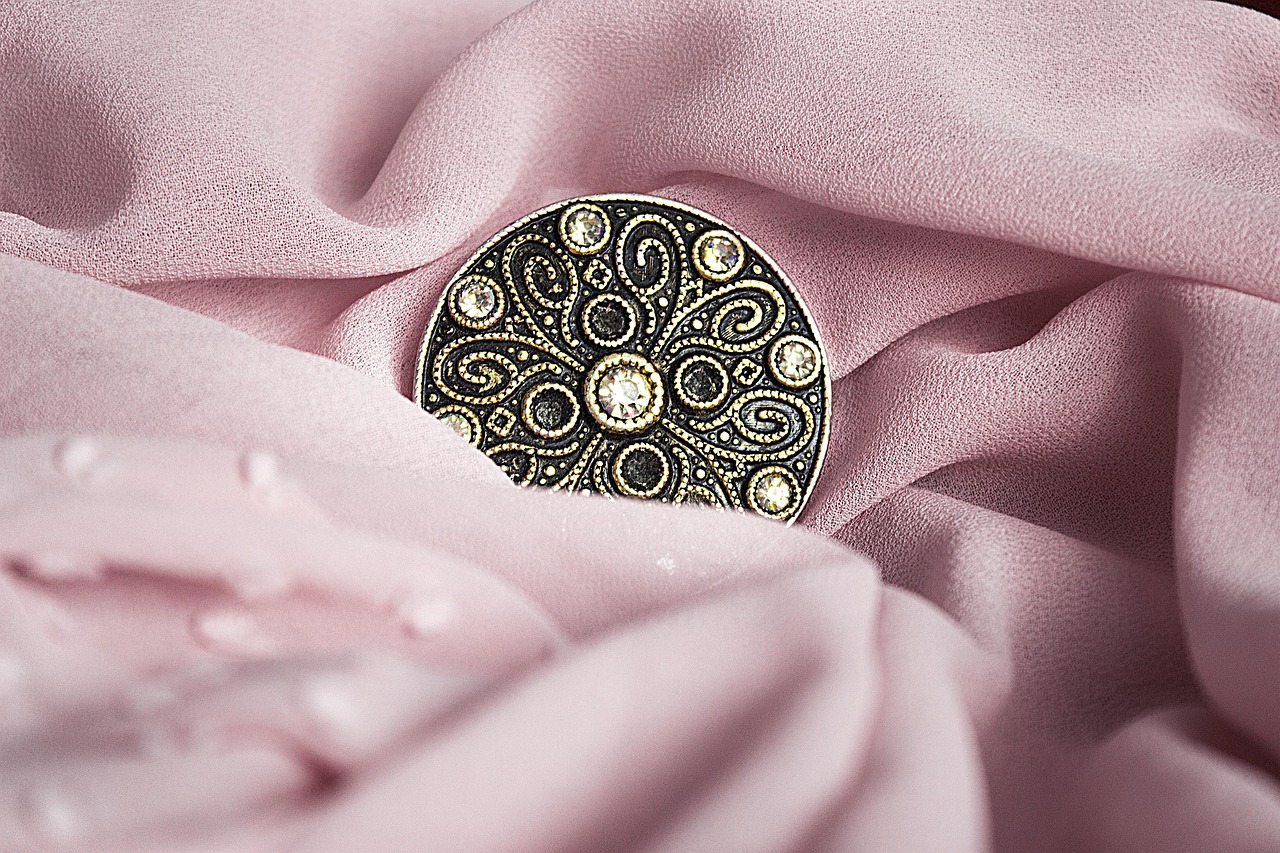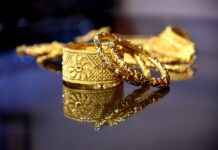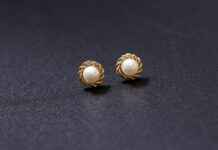This article delves into the hidden meanings and cultural significance of popular jewelry symbols, offering insights into their rich history and ongoing relevance in modern fashion and personal expression.
The Allure of Jewelry Symbols
Jewelry symbols have fascinated individuals for centuries, acting as profound expressions of identity, beliefs, and emotions. Recognizing their meanings not only enhances our appreciation for these decorative pieces but also connects us to the stories they tell.
The Meaning of the Heart Symbol
The heart symbol is universally acknowledged as a representation of love and affection. Its origins can be traced back to ancient civilizations, where it evolved into a powerful emblem of romantic love.
- Historical Context of the Heart Symbol: The heart’s historical roots link it to various ancient cultures, illustrating its journey to becoming a symbol of love.
- Heart Symbol in Different Cultures: Diverse cultures interpret the heart symbol in unique ways, from its sacred representation in Christianity to its significance in Eastern philosophies.
- Modern Uses of the Heart Symbol: Today, the heart symbol is prevalent in romantic gifts, signifying deep emotional connections and thriving in contemporary design.
The Significance of the Infinity Symbol
The infinity symbol embodies eternity and limitless possibilities. Its philosophical roots often associate it with concepts of time and space, making it a popular choice in jewelry design.
- Infinity in Modern Jewelry: Frequently used to symbolize everlasting love or friendship, its versatility appeals to many.
The Meaning Behind the Tree of Life Symbol
The Tree of Life signifies growth, strength, and interconnectedness. Its interpretations vary across cultures, adding depth to its significance in jewelry.
- Symbolism of Roots and Branches: In jewelry, the roots and branches symbolize family ties and personal growth, resonating with many individuals.
The Eye of Horus: Protection and Power
The Eye of Horus, an ancient Egyptian symbol, represents protection and healing. Its historical significance enhances its allure in modern jewelry.
- Modern Interpretations of the Eye of Horus: Today, it is often worn as a talisman for protection and good luck, blending tradition with contemporary fashion.
Understanding the Meaning of the Ankh Symbol
The Ankh symbolizes life and immortality. Its historical context enriches our understanding of its significance in jewelry.
- Modern Uses of the Ankh Symbol: Frequently worn as a symbol of eternal life, its design appeals to those seeking a connection to ancient wisdom.
The Power of the Lotus Flower in Jewelry
The lotus flower symbolizes purity and rebirth in various cultures. Its significance in jewelry designs reflects its deep meaning.
- Modern Jewelry Designs Featuring the Lotus: Its aesthetic appeal and profound symbolism make it a popular choice in contemporary jewelry.
Conclusion: The Timeless Appeal of Jewelry Symbols
Jewelry symbols carry deep meanings that transcend time and culture. Understanding these symbols enhances our appreciation for jewelry as a form of personal expression and a connection to our heritage.
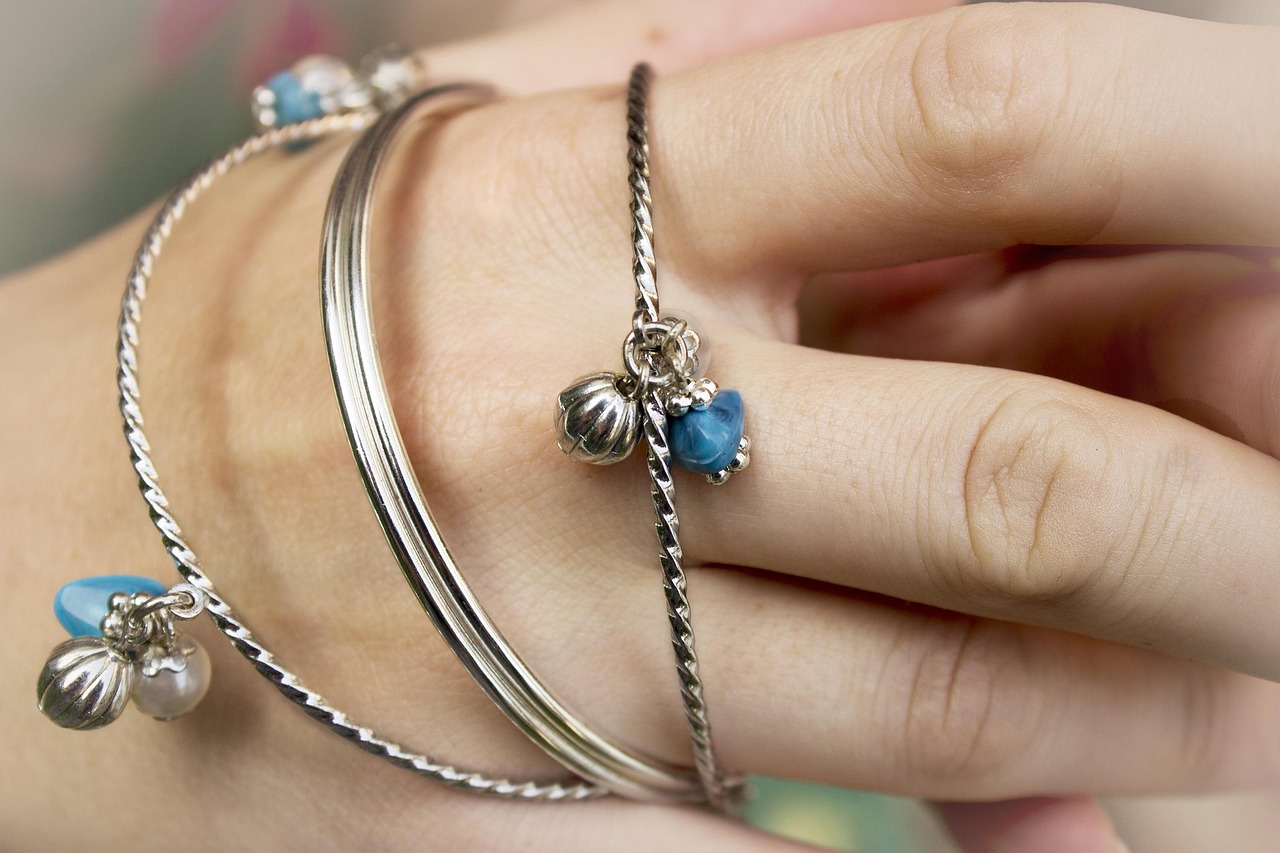
The Allure of Jewelry Symbols
Jewelry symbols have long been a source of fascination, captivating individuals across various cultures and eras. These symbols serve as more than just decorative elements; they embody personal stories, beliefs, and emotions. By delving into the meanings behind these symbols, we can gain a deeper appreciation for the jewelry we wear and the messages we convey through our choices.
Throughout history, jewelry has been used as a means of self-expression and identity. Each symbol carries its own narrative, often rooted in ancient traditions and cultural practices. For instance, the heart symbol is universally recognized as a representation of love, while the infinity symbol conveys a sense of eternity and unending connections. Understanding these meanings enriches our experience and allows us to connect more profoundly with the pieces we choose to adorn ourselves with.
Jewelry symbols also play a significant role in personal and societal beliefs. Many symbols are imbued with spiritual significance, acting as talismans for protection or as reminders of personal values. The Tree of Life, for example, symbolizes growth and interconnectedness, resonating with those who value family ties and personal development. Similarly, the Eye of Horus is steeped in ancient Egyptian lore, representing protection and good fortune.
In contemporary fashion, these symbols have evolved yet retained their core meanings. The lotus flower, for instance, represents purity and rebirth, making it a popular choice for those seeking transformation and renewal in their lives. As trends shift, the significance of these symbols remains relevant, bridging the gap between the past and present.
In conclusion, the allure of jewelry symbols lies in their ability to convey deep meanings and personal narratives. By exploring their histories and cultural significance, we can enhance our appreciation for these beautiful adornments, making informed choices that reflect our identities and values.

The Meaning of the Heart Symbol
The heart symbol has transcended time and geography to become a universal emblem of love, affection, and compassion. Its origins can be traced back to ancient civilizations, where it was not merely a representation of romantic love but also a symbol of the soul and emotional depth. This section explores the rich history and diverse interpretations of the heart symbol across various cultures.
The heart shape we recognize today has undergone significant evolution. In ancient Egypt, the heart was associated with the afterlife and was believed to be the seat of the soul. It was often weighed against a feather in the judgment of the dead. Similarly, in ancient Greece, the heart was thought to be the center of emotion and intellect, a belief that influenced later interpretations.
- Christianity: The sacred heart of Jesus symbolizes divine love and compassion.
- Eastern Philosophies: In some Eastern cultures, the heart is seen as a center of spiritual energy.
- Modern Western Culture: Today, the heart symbol is predominantly linked to romantic relationships, often found in gifts and tokens of love.
In contemporary jewelry design, the heart symbol is a staple. It is frequently used in pieces meant for romantic gestures, such as rings, necklaces, and bracelets. The heart’s design can vary from simple outlines to intricate patterns, each carrying its own emotional weight. This enduring popularity reflects society’s ongoing quest for connection and love.
There are numerous variations of the heart symbol, each conveying unique messages:
- Broken Heart: Represents loss or heartbreak.
- Intertwined Hearts: Signifies a deep emotional bond between two individuals.
- Heart with Wings: Often symbolizes freedom in love.
In conclusion, the heart symbol is more than just a shape; it carries profound meanings that resonate across cultures and eras. Its versatility in representing love, loss, and connection makes it a powerful emblem in both personal expression and jewelry design.
Historical Context of the Heart Symbol
The heart symbol, recognized globally as an emblem of love, has a fascinating historical context that traces back to ancient civilizations. Its evolution reflects profound changes in societal norms and cultural interpretations of affection.
Initially, the heart symbol was not directly associated with romantic love. In ancient times, it represented the seat of emotions, thoughts, and even the essence of life itself. For instance, ancient Egyptians believed the heart was the source of intelligence and emotion, often weighing it against a feather in the afterlife to determine one’s fate.
As cultures evolved, so did the interpretation of the heart symbol. In medieval Europe, the heart began to be linked to courtly love, a concept that emphasized noble ideals and chivalric values. This shift marked the beginning of the heart’s association with romantic love, as poets and artists began to depict it in their works, thus embedding it into the cultural fabric of the time.
Throughout the Renaissance, the heart symbol gained even more prominence. It was during this period that the heart became a common motif in art and literature, often illustrating themes of passion and devotion. The iconic shape we recognize today began to take form, symbolizing not just love but also sacrifice and longing.
In various cultures, the heart symbol has taken on unique meanings. For example, in some Eastern philosophies, it symbolizes compassion and emotional balance, while in Western cultures, it remains a powerful emblem of romantic love and connection.
Today, the heart symbol is ubiquitous in jewelry, often used in pieces exchanged between lovers, friends, and family members. Its enduring popularity showcases its capacity to convey deep emotional connections, transcending language and cultural barriers.
In conclusion, the historical context of the heart symbol reveals its rich and varied significance across cultures and eras. From its origins as a representation of life and emotion to its modern association with love, the heart symbol continues to resonate deeply with individuals worldwide.
Heart Symbol in Different Cultures
The Heart Symbol in Different Cultures
The heart symbol, a universal emblem of love and affection, carries a rich tapestry of meanings across various cultures. Its interpretations are as diverse as the societies that embrace it, each adding unique layers to its significance.
- Christianity: In Christianity, the heart is often associated with the Sacred Heart of Jesus, symbolizing divine love and compassion. This representation emphasizes the emotional connection between humanity and the divine, portraying the heart as a vessel of unconditional love.
- Eastern Philosophies: In Eastern traditions, particularly within Buddhism and Hinduism, the heart is viewed as the center of spiritual energy. It is often linked to concepts of compassion and enlightenment, signifying the importance of love in achieving inner peace and harmony.
- Native American Culture: For many Native American tribes, the heart symbol represents the connection to nature and the spirit world. It embodies the idea of living in harmony with the earth and respecting all forms of life.
- Modern Interpretations: In contemporary society, the heart symbol has evolved into a popular motif in jewelry and art, often representing romantic love. It is commonly exchanged in gifts, signifying deep emotional bonds between partners.
Each cultural interpretation enriches the heart symbol’s meaning, transforming it from a simple icon into a profound representation of human emotion and connection. Understanding these diverse perspectives allows for a deeper appreciation of the heart symbol’s role in expressing love and compassion across the globe.
Modern Uses of the Heart Symbol
In the realm of contemporary jewelry, the heart symbol holds a significant place, especially when it comes to expressing romantic sentiments. This emblematic shape, often crafted in various materials such as gold, silver, and gemstones, serves as a powerful representation of love and affection. Its enduring popularity reflects not only its aesthetic appeal but also its deep emotional resonance.
The heart symbol is frequently chosen for gifts that celebrate relationships, such as anniversaries, Valentine’s Day, and weddings. By gifting a piece of jewelry adorned with a heart, individuals convey feelings that words may sometimes fail to express. This tradition of using heart-shaped jewelry as a romantic gesture has roots in history, but it has evolved to fit modern sensibilities.
Moreover, the versatility of the heart symbol allows it to transcend mere romantic connotations. It can also represent friendship, family bonds, and even self-love. This multifaceted nature makes it a popular choice for personalized jewelry, where the heart can be combined with initials or birthstones to create unique pieces that hold special meanings for the wearer.
In addition to its emotional significance, the heart symbol has found its way into various fashion trends. Designers often incorporate heart motifs into their collections, making them a staple in both casual and formal jewelry. From delicate necklaces to statement rings, the heart symbol continues to inspire creativity and innovation in the jewelry industry.
In summary, the modern uses of the heart symbol in jewelry encapsulate a wide range of emotions and connections. Its ability to convey deep sentiments, along with its stylish versatility, ensures that it remains a cherished choice for both gift-givers and wearers alike.
Variations of the Heart Symbol
The heart symbol is one of the most recognizable icons in the world, representing love, affection, and emotional connections. However, within this simple shape lies a variety of interpretations and styles, each conveying distinct messages about relationships and emotions.
Among the different styles of heart symbols, the broken heart stands out as a poignant representation of loss and heartbreak. This symbol resonates deeply with those who have experienced the pain of a relationship ending. It serves as a reminder of the emotional turmoil that can accompany love, illustrating that love is not always a joyous experience.
Another significant variation is the intertwined hearts, which symbolize a deep bond and unity between two individuals. This design often signifies a loving partnership, where two hearts are connected, representing shared experiences, mutual support, and a commitment to one another. It embodies the idea that love can create a beautiful synergy between two people.
Additionally, the heart within a heart design conveys a message of deep affection and protection. This symbol often reflects the idea of nurturing love, where one person holds another in their heart, signifying care and devotion. It can be a popular choice for gifts between partners, friends, or family members, emphasizing the importance of emotional safety and connection.
Moreover, the flaming heart symbolizes passionate love and desire. This variation often represents a love that is intense and fervent, capturing the essence of romantic relationships filled with excitement and passion. It is frequently used in tattoos and jewelry, appealing to those who want to express their vibrant emotions.
In conclusion, the variations of the heart symbol carry unique meanings that reflect the complexities of human relationships. Each design, whether it be a broken heart, intertwined hearts, or a flaming heart, encapsulates different emotional states and experiences. Understanding these symbols allows individuals to express their feelings more profoundly and connect with others on a deeper level.
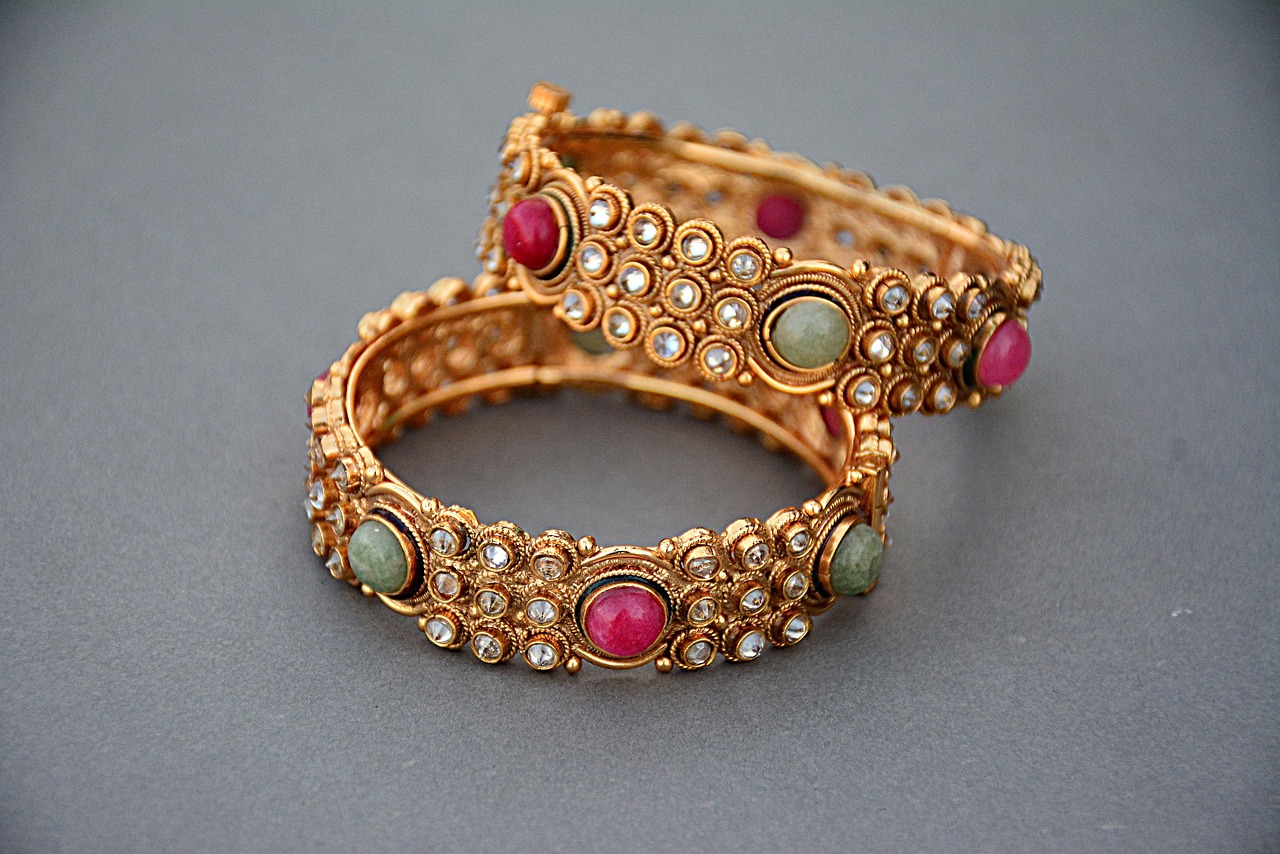
The Significance of the Infinity Symbol
The infinity symbol, often depicted as a sideways figure eight (∞), holds profound meanings that resonate deeply with many individuals. It is widely recognized as a representation of eternity, limitless possibilities, and the concept of forever. This symbol has transcended its mathematical origins to become a popular motif in jewelry design, attracting those who seek to convey enduring love, friendship, and commitment.
Historical Origins of the Infinity Symbol
The roots of the infinity symbol can be traced back to ancient civilizations. Its earliest known use dates to the 1650s in mathematics, where it represented an unbounded quantity. However, beyond its mathematical significance, the infinity symbol has philosophical implications associated with time and space, suggesting that everything is interconnected and that love and relationships can endure beyond physical limitations.
Infinity in Modern Jewelry
In contemporary jewelry, the infinity symbol has gained immense popularity, particularly in pieces that symbolize everlasting love or friendship. Many couples choose infinity rings or necklaces as a representation of their unending bond. The versatility of the design allows it to be incorporated into various styles, from minimalist to ornate, making it suitable for any occasion.
Why the Infinity Symbol Appeals to Many
- Personal Significance: For many, the infinity symbol serves as a reminder of significant relationships or life events that have shaped who they are.
- Fashion Statement: The infinity symbol’s elegant design makes it a fashionable choice, appealing to a broad audience.
- Gift Option: It is a popular choice for gifts, especially on anniversaries or special occasions, as it encapsulates deep emotions.
In conclusion, the infinity symbol’s allure lies not only in its aesthetic appeal but also in its rich history and profound meanings. As a representation of eternity and limitless possibilities, it continues to inspire and connect people through the art of jewelry.
Historical Origins of the Infinity Symbol
The infinity symbol (∞) is a captivating representation of the endless and the eternal. Its origins can be traced back to ancient civilizations, where it was often associated with philosophical concepts that delve into the nature of existence, time, and space. This symbol has transcended cultures and eras, evolving in meaning and significance over time.
Historically, the infinity symbol can be linked to the ancient Greeks, particularly through the work of the mathematician John Wallis, who introduced it in the 17th century. Wallis used the symbol to represent an unbounded quantity, which laid the groundwork for its mathematical implications. However, its philosophical roots run deeper, as it has been associated with the idea of eternity and the infinite cycle of life.
In various philosophical traditions, the infinity symbol embodies the concept of time as a non-linear continuum. It suggests that time is not merely a series of moments but rather an endless loop, where past, present, and future coexist simultaneously. This perspective resonates with many, as it challenges our conventional understanding of time as a finite resource.
Moreover, the infinity symbol is often linked to the concept of space and the universe’s boundless nature. It represents the idea that the cosmos is limitless, filled with infinite possibilities and potential. This connection to the universe enhances the symbol’s appeal, making it a powerful emblem in various cultures.
In contemporary society, the infinity symbol has found its way into the realm of jewelry, where it is frequently used to symbolize everlasting love and deep connections between individuals. Its versatility allows it to be incorporated into various designs, from rings to necklaces, serving as a reminder of the enduring bonds we share with others.
In conclusion, the infinity symbol’s historical origins reveal a rich tapestry of philosophical thought and cultural significance. Its ability to convey profound concepts of time and space, combined with its modern interpretations, continues to resonate with people around the world. Understanding these roots enriches our appreciation for this timeless symbol, making it a cherished choice in jewelry and personal expression.
Infinity in Modern Jewelry
The infinity symbol has become a staple in the world of modern jewelry, symbolizing not just eternal love but also a profound connection between individuals. Its elegant design, resembling a sideways figure eight, conveys the idea of limitless possibilities and enduring relationships.
In today’s jewelry market, the infinity symbol is frequently used to represent everlasting love or friendship. This versatility makes it a popular choice for gifts, whether for anniversaries, weddings, or simply as a token of appreciation. Many people choose infinity jewelry to express their feelings towards loved ones, making it a meaningful addition to any collection.
Historically, the infinity symbol has roots in mathematics and philosophy, where it represents the concept of infinity and the unending nature of time and space. This rich background adds depth to its significance in jewelry, allowing wearers to connect with a broader narrative of love and continuity.
| Type of Jewelry | Meaning | Occasions |
|---|---|---|
| Infinity Rings | Commitment and everlasting love | Engagements, anniversaries |
| Infinity Necklaces | Connection and friendship | Friendship gifts, birthdays |
| Infinity Bracelets | Bonding and unity | Casual wear, special occasions |
Moreover, the infinity symbol is often combined with other elements such as hearts or birthstones, enhancing its appeal and personalization. This customization allows individuals to create unique pieces that resonate with their personal stories and relationships.
In the realm of fashion, the infinity symbol has transcended traditional jewelry, appearing in various accessories and designs, from clothing to home decor. Its universal message of love and connection continues to inspire designers and consumers alike, ensuring its place in contemporary culture.
In conclusion, the infinity symbol remains a powerful emblem in modern jewelry, representing not only love and friendship but also the infinite possibilities that life offers. As it continues to evolve in design and meaning, its essence remains rooted in the human experience of connection and commitment.
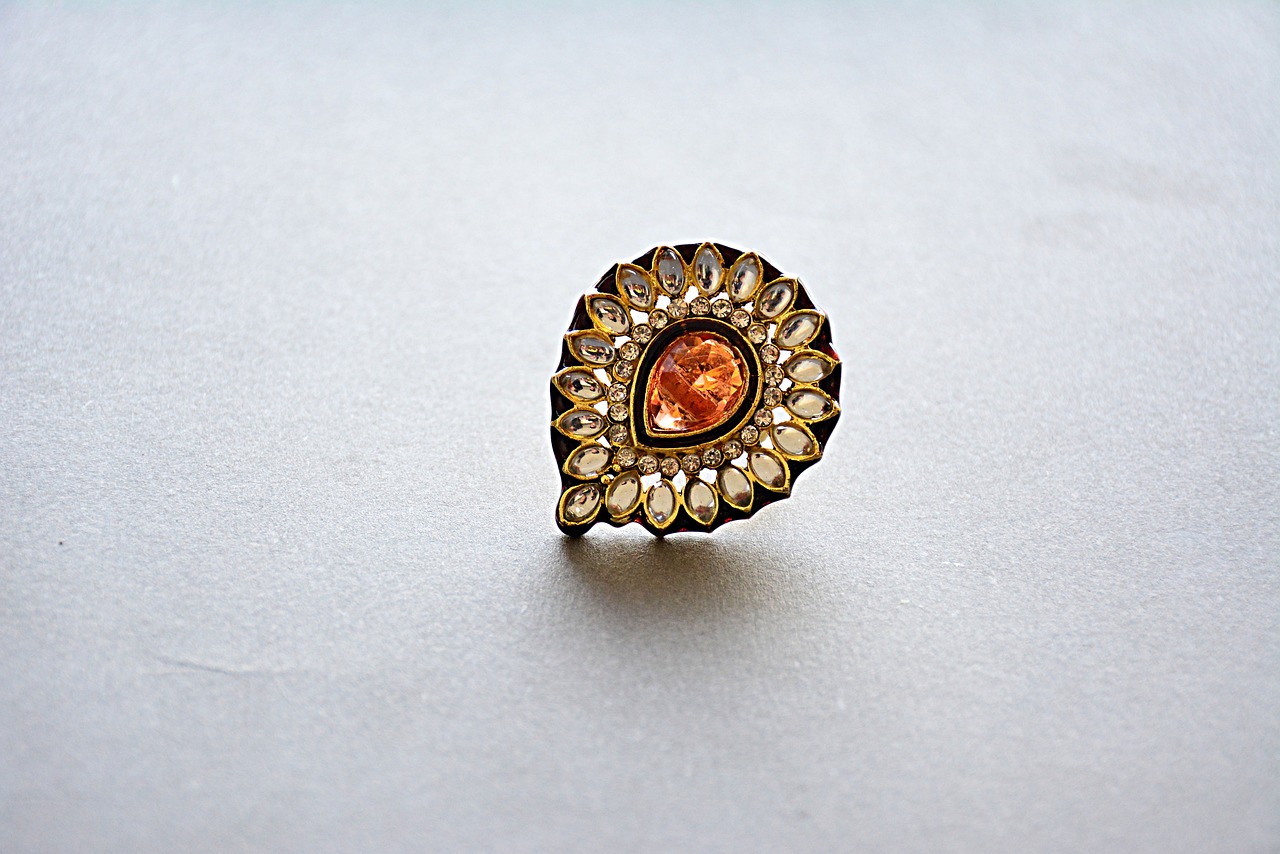
The Meaning Behind the Tree of Life Symbol
The Tree of Life is a powerful symbol that transcends cultures and time, representing the essence of life itself. It embodies concepts of growth, strength, and interconnectedness, serving as a reminder of our connection to nature and each other. This section delves into the rich tapestry of interpretations surrounding the Tree of Life, highlighting its significance in various cultures and its growing popularity in jewelry design.
Across the globe, the Tree of Life appears in numerous mythologies and spiritual traditions. In Christianity, it symbolizes eternal life and divine wisdom, often depicted in the Garden of Eden. In Eastern philosophies, it represents the cycle of life, death, and rebirth, emphasizing the harmony of existence. Similarly, in Celtic culture, the Tree of Life signifies the connection between the earthly and the spiritual realms, illustrating how all living things are intertwined.
The roots and branches of the Tree of Life carry profound meanings. The roots symbolize family ties and heritage, grounding us in our ancestry, while the branches represent personal growth and the journey of life. This duality resonates with many individuals, making the Tree of Life a popular motif in jewelry. It serves as a beautiful reminder of one’s roots and the potential for growth and expansion.
Jewelry featuring the Tree of Life is not just an aesthetic choice; it holds deep personal significance for the wearer. Pieces such as necklaces, bracelets, and earrings often incorporate intricate designs that highlight the tree’s branches and roots, making them visually striking. Many people choose to wear these symbols to celebrate their family connections, personal journeys, or spiritual beliefs. The Tree of Life in jewelry serves as a daily reminder of one’s values and aspirations.
In conclusion, the Tree of Life is a multifaceted symbol that encapsulates the essence of life, growth, and interconnectedness. Its interpretations across cultures enrich its meaning, while its presence in jewelry allows individuals to express their personal stories and connections. Whether worn as a statement piece or a subtle accent, the Tree of Life continues to inspire and connect people worldwide.
Tree of Life in Various Cultures
The Tree of Life is a profound symbol that has transcended time and geography, appearing in various cultures around the world. Its representation of interconnectedness among all forms of life resonates deeply with humanity’s quest for understanding our place in the universe. This article delves into the diverse interpretations of the Tree of Life across different cultures, revealing the layers of meaning it embodies.
In ancient Egyptian mythology, the Tree of Life was seen as a source of nourishment and eternal life. It was often depicted in connection with the gods, symbolizing the continuous cycle of life and death. The Egyptians believed that the tree was a bridge between the earthly realm and the divine, emphasizing the importance of harmony between nature and spirituality.
Similarly, in Christianity, the Tree of Life appears in the Book of Genesis, representing divine wisdom and the promise of eternal life. It is often associated with the Garden of Eden, where it symbolizes the purity and abundance of creation. This interpretation highlights the moral and ethical dimensions of life, urging individuals to seek knowledge and righteousness.
In Eastern philosophies, particularly in Buddhism, the Tree of Life signifies enlightenment and the path to spiritual awakening. The Bodhi tree, under which Buddha attained enlightenment, serves as a powerful reminder of growth, transformation, and the pursuit of inner peace. This perspective encourages individuals to cultivate their inner selves and connect with the greater whole.
The Native American cultures also embrace the Tree of Life as a symbol of unity and balance. It represents the connection between humans, nature, and the spirit world. The roots symbolize the ancestral ties and the branches signify the growth and evolution of life, emphasizing the importance of community and respect for the environment.
In conclusion, the Tree of Life serves as a universal symbol that encapsulates the essence of life, growth, and interconnectedness. Each culture’s interpretation enriches our understanding of this powerful emblem, reminding us of our shared humanity and the intricate web of life that binds us all.
Symbolism of Roots and Branches
The Tree of Life is a powerful symbol that resonates deeply with many individuals, representing not only the interconnectedness of life but also the profound significance of family and personal growth. The roots and branches of this tree embody the essence of our heritage and the journey of our lives.
Roots symbolize our origins, grounding us in our past and connecting us to our ancestors. They remind us of where we come from, instilling a sense of belonging and identity. Each root can be seen as a connection to family ties, representing the love and support that we receive from our loved ones. In many cultures, the roots are viewed as the foundation of our personal growth, emphasizing the importance of nurturing relationships and honoring our lineage.
On the other hand, the branches signify growth, expansion, and the potential for new beginnings. They reach out towards the sky, representing our aspirations and the paths we choose to follow in life. Each branch can symbolize the different directions our lives can take, illustrating how our choices and experiences shape who we are. The branches also reflect the idea of personal development, encouraging us to embrace change and strive for growth in various aspects of our lives.
In jewelry, the Tree of Life design often incorporates these elements, making it a meaningful choice for those seeking to express their values and connections. Wearing such a piece can serve as a reminder of one’s roots and the importance of family while also inspiring the wearer to pursue their dreams and cultivate personal growth.
In conclusion, the symbolism of the roots and branches in the Tree of Life serves as a profound reminder of our interconnectedness and the importance of both our past and future. This rich symbolism makes it a cherished motif in jewelry, appealing to those who value personal growth and familial bonds.
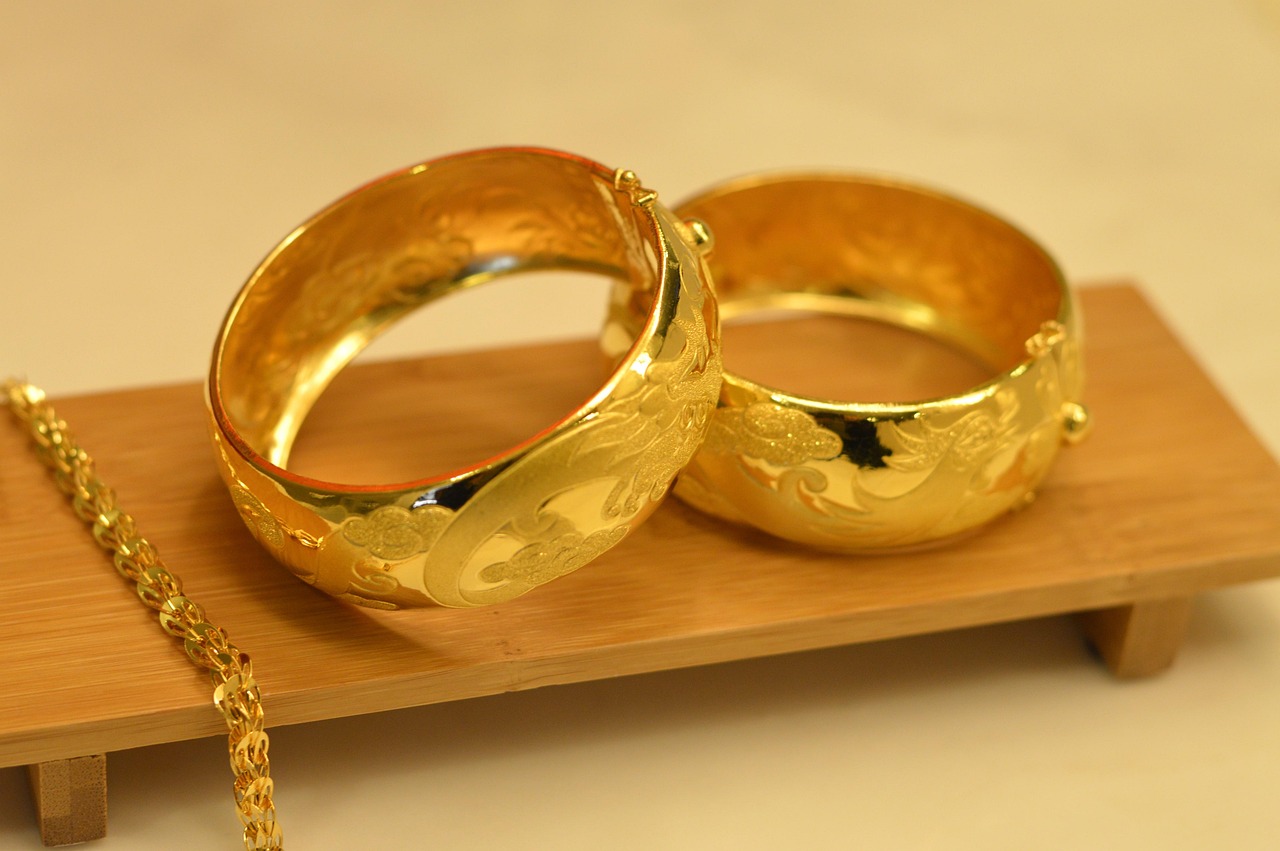
The Eye of Horus: Protection and Power
The Eye of Horus, also known as the Wadjet, is a powerful symbol from ancient Egypt that has captivated people for centuries. This emblem is not only associated with protection and healing but also embodies a rich tapestry of historical significance and cultural relevance.
The origins of the Eye of Horus can be traced back to the myth of Horus, the falcon-headed god, who was revered as the protector of the pharaohs and the embodiment of the sky. According to ancient Egyptian mythology, Horus lost his left eye during a battle with his uncle Set, who represented chaos and disorder. The eye was later restored by the god Thoth, symbolizing healing and wholeness. This mythological background contributes to the Eye of Horus being seen as a powerful symbol of protection against evil forces and misfortune.
In contemporary times, the Eye of Horus has transcended its ancient roots and is often worn in jewelry as a talisman for protection and good luck. Many people believe that wearing this symbol can safeguard them from harm and attract positive energy. The Eye of Horus is frequently crafted into pendants, bracelets, and earrings, making it a popular choice for those seeking to connect with the rich history of ancient Egypt while expressing their personal style.
- Materials and Styles: The Eye of Horus is often designed using various materials, including gold, silver, and gemstones, which enhance its aesthetic appeal.
- Symbolic Combinations: Many modern pieces combine the Eye of Horus with other symbols, such as the ankh or lotus flower, to create layered meanings.
- Fashion Trends: The resurgence of interest in ancient symbols has led to a renewed popularity of the Eye of Horus in fashion, appealing to those interested in both history and style.
In conclusion, the Eye of Horus remains a significant symbol that bridges the gap between ancient beliefs and modern interpretations. Its enduring appeal lies in its rich history and the powerful meanings it conveys, making it a cherished choice in the world of jewelry.
Historical Significance of the Eye of Horus
The Eye of Horus, also known as the Wadjet, is a symbol steeped in ancient history and rich in meaning. Originating in ancient Egypt, this emblem has been associated with protection, royal power, and good health. Its significance extends beyond mere ornamentation; it embodies a belief system that has influenced countless generations.
The Eye of Horus represents the eye of the falcon god Horus, who was revered as a protector of the pharaohs and a symbol of the heavens. According to Egyptian mythology, Horus lost his eye during a battle with his uncle Set, who represented chaos and disorder. The restoration of his eye by the god Thoth symbolized healing and wholeness, thus making the Eye of Horus a powerful amulet for protection against evil forces.
Throughout history, the Eye of Horus was used in various forms of jewelry, often worn by pharaohs and nobility as a talisman to ward off misfortune. Its intricate design, featuring a stylized eye and distinctive markings, captivated artisans and jewelers, leading to its incorporation in a wide array of decorative pieces.
In contemporary society, the Eye of Horus has experienced a resurgence in popularity, often seen in modern jewelry designs that blend traditional symbolism with current fashion trends. Many wear it as a protective charm, believing it offers a shield against negativity and misfortune. This enduring appeal lies in its dual nature: it is both a historical artifact and a modern-day symbol of strength and resilience.
In summary, the Eye of Horus is more than just a beautiful piece of jewelry; it is a representation of ancient beliefs that continue to resonate today. Whether as a symbol of protection or a fashionable accessory, its rich history adds depth to its allure in contemporary culture.
Modern Interpretations of the Eye of Horus
The Eye of Horus, a symbol steeped in ancient Egyptian tradition, has transcended its historical roots to become a significant emblem in modern jewelry. Often regarded as a powerful talisman, it is believed to offer both protection and good fortune to its wearer. This enduring appeal reflects a fascinating interplay between ancient beliefs and contemporary fashion trends.
Historically, the Eye of Horus represented the concept of protection against evil and misfortune. In ancient Egypt, this symbol was associated with the god Horus, who was often depicted as a falcon. The eye itself symbolized not only physical sight but also spiritual insight, making it a multifaceted emblem of power and security.
In today’s world, the Eye of Horus is frequently incorporated into various jewelry designs, ranging from necklaces and bracelets to earrings and rings. Its popularity is not merely due to its aesthetic appeal; many individuals are drawn to its rich history and the protective qualities it embodies. Wearing this symbol is often seen as a way to connect with ancient wisdom while also making a personal style statement.
The modern interpretations of the Eye of Horus extend beyond mere decoration. Many people wear it as a reminder of their personal journey and the challenges they have overcome. As a symbol of resilience and strength, it resonates with those seeking to navigate the complexities of modern life. Furthermore, the Eye of Horus is often gifted to loved ones as a token of protection and well-wishing, reinforcing its significance in personal relationships.
In conclusion, the Eye of Horus serves as a bridge between the past and present, embodying a blend of tradition and modernity. Its role as a talisman for protection and good luck continues to thrive, making it a cherished symbol in the realm of contemporary jewelry.

Understanding the Meaning of the Ankh Symbol
The Ankh, a prominent symbol from ancient Egypt, holds profound meanings related to life and immortality. This unique emblem, often depicted as a cross with a loop at the top, is not just an artistic representation but a powerful icon that has transcended time and culture. In this section, we will delve into the origins of the Ankh, its significance in ancient Egyptian society, and its enduring presence in contemporary jewelry designs.
The Ankh was widely used in ancient Egyptian art and hieroglyphics, symbolizing the concept of eternal life. It was often seen in the hands of gods and goddesses, indicating their role as givers of life. The symbol’s origins can be traced back to the early dynastic period, where it was associated with the breath of life and the afterlife. The Ankh served as a reminder of the connection between the physical and spiritual realms.
In ancient Egypt, the Ankh was not only a symbol of life but also represented the unity of opposites. The loop at the top signifies the feminine aspect, while the cross represents the masculine. This duality reflects the balance necessary for life and the continuity of existence. Additionally, the Ankh was often placed in tombs as a protective charm, ensuring the deceased’s safe passage to the afterlife.
Today, the Ankh remains a popular motif in jewelry, appealing to those who seek a connection to ancient wisdom and spirituality. Its design is often incorporated into necklaces, bracelets, and earrings, symbolizing eternal life and protection. Many wear the Ankh as a talisman, believing it brings good fortune and serves as a reminder of the interconnectedness of life.
In conclusion, the Ankh is more than just a decorative symbol; it embodies a rich history and a deep spiritual significance that resonates with many in modern society. Its enduring appeal in jewelry design continues to inspire individuals seeking meaning and connection through their adornments.
Historical Context of the Ankh
The Ankh, often referred to as the “key of life,” is a powerful symbol that has captivated people for centuries. Its distinctive shape, resembling a cross with a loop at the top, is deeply embedded in ancient Egyptian culture. The Ankh is more than just a decorative piece; it embodies profound meanings related to life, death, and immortality.
Historically, the Ankh was associated with the gods and the afterlife. It was frequently depicted in the hands of deities, symbolizing their power to grant life. The ancient Egyptians believed that the Ankh could provide the deceased with eternal life, making it a common motif in tombs and funerary art. This connection to both life and death reflects the Egyptians’ complex understanding of existence and the afterlife.
In addition to its religious significance, the Ankh also represented the balance between opposites. It symbolizes the harmony between masculine and feminine energies, as well as the connection between the physical and spiritual realms. This duality made the Ankh a versatile symbol, embraced by various cultures and movements throughout history.
In modern times, the Ankh has transcended its ancient origins, becoming a popular motif in contemporary jewelry. Many people wear the Ankh as a statement of their beliefs in spirituality and personal growth. Its rich history and symbolic depth resonate with those seeking a connection to ancient wisdom and a reminder of the cyclical nature of life.
Understanding the historical context of the Ankh enhances its appreciation in jewelry design. It serves not only as an aesthetic choice but also as a meaningful representation of life’s journey, making it a cherished symbol for many.
Modern Uses of the Ankh Symbol
In the realm of contemporary jewelry, the Ankh symbol holds a profound significance, often serving as a powerful representation of eternal life. This ancient Egyptian icon, resembling a cross with a loop at the top, has transcended its original cultural context to become a popular motif in modern fashion.
The allure of the Ankh lies not only in its striking design but also in its deep-rooted spiritual meaning. Many wearers are drawn to the Ankh as a way to connect with ancient wisdom and the mysteries of life and death. In a world where the quest for meaning is ever-present, the Ankh serves as a reminder of the continuity of existence and the belief in an afterlife.
Furthermore, the Ankh is frequently associated with protection and prosperity. In ancient Egypt, it was often depicted in the hands of deities, symbolizing their power to grant life and safeguard their followers. Today, individuals adorn themselves with Ankh jewelry not only for its aesthetic appeal but also for the positive energy it is believed to carry.
In terms of design, the Ankh appears in various forms—ranging from simple pendants to intricate rings and bracelets. This versatility allows it to be incorporated into different styles, appealing to a wide audience. Whether worn as a statement piece or a subtle accessory, the Ankh enhances personal style while embodying a rich historical narrative.
Moreover, the Ankh has found its place in the realm of spirituality and self-expression. Many individuals choose to wear this symbol as a form of personal empowerment, signifying their connection to the universal cycle of life. By embracing the Ankh, wearers often express their beliefs and values, making it a meaningful addition to their jewelry collection.
In conclusion, the Ankh symbol’s modern usage extends beyond mere decoration. It serves as a bridge between ancient traditions and contemporary life, allowing individuals to express their spiritual beliefs and appreciation for history through jewelry. As this symbol continues to resonate with many, its significance in the world of fashion and personal expression remains ever relevant.

The Power of the Lotus Flower in Jewelry
The lotus flower holds a significant place in various cultures, symbolizing purity, rebirth, and spiritual enlightenment. This beautiful flower, which blooms in muddy waters, represents the ability to rise above challenges and emerge unscathed. In the realm of jewelry design, the lotus flower is not just an aesthetic choice; it carries profound meanings that resonate deeply with many individuals.
Across different cultures, the lotus flower is revered for its unique qualities. In Buddhism, it symbolizes the journey towards enlightenment, illustrating how one can transcend the challenges of life. Similarly, in Egyptian culture, the lotus is associated with creation and rebirth, often linked to the sun god Ra. The flower’s ability to bloom beautifully despite its murky surroundings serves as a powerful metaphor for resilience and transformation.
The representation of the lotus in jewelry often reflects these themes of growth and renewal. Many contemporary jewelry designers incorporate the lotus flower into their collections, using it as a centerpiece in necklaces, earrings, and bracelets. The intricate designs capture the flower’s delicate petals and serene beauty, making it a popular choice for those seeking jewelry that embodies deeper meanings.
In addition to its aesthetic appeal, the lotus flower in jewelry serves as a reminder of one’s personal journey. Wearing such pieces can inspire individuals to embrace their struggles and celebrate their growth. Whether it’s a simple lotus pendant or an elaborate ring, these designs evoke feelings of hope and renewal.
In conclusion, the lotus flower is more than just a decorative motif in jewelry; it is a symbol of purity, rebirth, and spiritual growth. By understanding its significance, individuals can choose jewelry that not only enhances their style but also reflects their personal values and life experiences.
Lotus Flower in Different Cultures
The lotus flower holds a significant place in various cultures, particularly in Eastern philosophies, where it symbolizes purity, enlightenment, and rebirth. Its ability to bloom beautifully even in muddy waters serves as a powerful metaphor for overcoming adversity and rising above challenges.
In Buddhism, the lotus is especially revered. It represents the journey of the soul towards enlightenment. Just as the lotus rises from the depths of murky water to bloom on the surface, individuals are encouraged to transcend their struggles and reach spiritual awakening. This symbolism is often reflected in Buddhist art, where the Buddha is depicted sitting on a lotus, signifying his purity and divine nature.
In Hinduism, the lotus is associated with several deities, including Lakshmi, the goddess of wealth and prosperity, and Brahma, the creator god. The lotus is seen as a symbol of divine beauty and spiritual awakening. Hindus believe that the unfolding petals of the lotus represent the expansion of the soul and the journey towards self-realization.
Moreover, in Egyptian culture, the lotus flower is linked to creation and rebirth. It is often depicted in ancient hieroglyphics and art, symbolizing the sun and the cycle of life. The Egyptians believed that the lotus would close at night and reopen with the dawn, mirroring the cycle of life and death.
In modern contexts, the lotus flower has found its way into jewelry designs, where it serves not only as a beautiful aesthetic element but also as a powerful symbol of transformation and resilience. Many people choose to wear lotus-themed jewelry as a reminder of their personal growth and ability to overcome challenges.
Overall, the lotus flower’s rich symbolism across different cultures highlights its universal message of hope, purity, and the potential for renewal, making it a beloved motif in art and jewelry.
Modern Jewelry Designs Featuring the Lotus
The lotus flower is not just a beautiful element in nature; it holds profound meanings across various cultures, making it a popular motif in contemporary jewelry. This exquisite flower, which blooms in muddy waters, is often seen as a symbol of transformation, purity, and rebirth. Its ability to rise above adversity resonates deeply with many individuals, making it a favored choice for personal adornments.
In many Eastern cultures, the lotus is revered for its connection to spirituality and enlightenment. For instance, in Buddhism, it represents the journey towards spiritual awakening, symbolizing how one can emerge from the depths of suffering to attain a state of purity and peace. This significance has made the lotus a powerful emblem in jewelry, often crafted into elegant designs that reflect both beauty and meaning.
Contemporary jewelry designers have embraced the lotus flower in various forms, including necklaces, earrings, and bracelets. The use of materials such as gold, silver, and gemstones enhances the aesthetic appeal of these pieces, allowing them to serve not only as decorative items but also as personal talismans. Many wearers choose lotus jewelry to remind themselves of their own resilience and capacity for growth.
- Symbol of Transformation: The lotus flower’s ability to bloom in challenging conditions serves as a reminder of personal transformation.
- Aesthetic Appeal: Its intricate designs and vibrant colors make lotus jewelry visually striking.
- Cultural Significance: The lotus is a sacred symbol in many cultures, adding depth to its value in jewelry.
In conclusion, the lotus flower’s representation of transformation and purity makes it a timeless symbol in modern jewelry. Whether worn for its beauty or its deeper meanings, lotus jewelry continues to inspire and uplift those who choose to wear it.
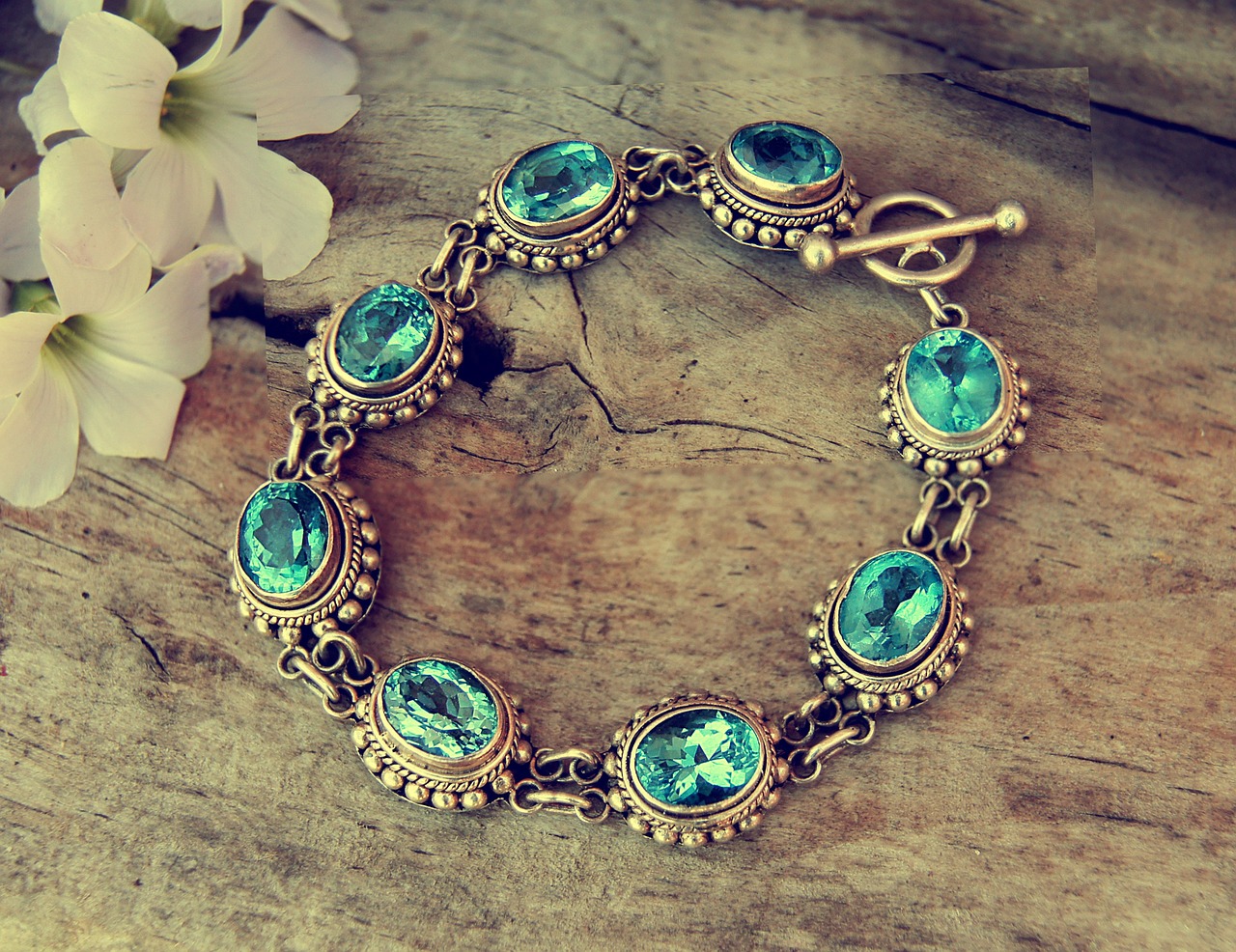
Conclusion: The Timeless Appeal of Jewelry Symbols
The Secret Meanings Behind Popular Jewelry Symbols
Jewelry symbols have long been a source of fascination, transcending cultural boundaries and historical eras. These symbols are not merely decorative; they carry profound meanings that reflect our identities, beliefs, and emotions. By understanding these meanings, we can deepen our appreciation for jewelry as a powerful form of personal expression and a link to our heritage.
The Allure of Jewelry Symbols
From ancient times to modern fashion, jewelry symbols have served as a means of communication, often conveying messages that words cannot. Each symbol tells a story, representing various aspects of life, love, and spirituality. Recognizing the significance behind these symbols can transform our relationship with jewelry, making it more than just an accessory.
The Meaning of the Heart Symbol
The heart symbol, universally recognized as a representation of love, has a rich history that varies across cultures. Its evolution from ancient depictions to modern interpretations showcases its enduring significance in expressing affection.
Historical Context of the Heart Symbol
Dating back to ancient civilizations, the heart symbol has been linked to emotions and relationships. Different cultures have imbued it with unique meanings, from sacred representations in religions to its use in romantic contexts today.
Modern Uses of the Heart Symbol
Today, the heart symbol is a popular choice in jewelry, often found in gifts exchanged between loved ones. Its timeless appeal continues to resonate, making it a staple in contemporary designs.
The Significance of the Infinity Symbol
The infinity symbol represents eternity and boundless possibilities. Its philosophical roots highlight concepts of time and space, making it a fitting emblem for everlasting love and friendship.
The Meaning Behind the Tree of Life Symbol
Symbolizing growth and interconnectedness, the Tree of Life has diverse interpretations across cultures. It serves as a reminder of our connections to each other and the world around us.
The Eye of Horus: Protection and Power
This ancient Egyptian symbol signifies protection and healing. Its historical significance adds to its allure, making it a popular choice for those seeking spiritual safeguarding.
Understanding the Meaning of the Ankh Symbol
The Ankh, representing life and immortality, carries a deep historical context that enhances its significance in modern jewelry designs. It appeals to those wishing to connect with ancient wisdom.
The Power of the Lotus Flower in Jewelry
Symbolizing purity and rebirth, the lotus flower holds a special place in various cultures. Its representation in jewelry often signifies transformation and resilience.
In conclusion, the rich tapestry of jewelry symbols reveals deep meanings that resonate across time and culture. By understanding these symbols, we enhance our appreciation for jewelry as a profound form of personal expression and a connection to our heritage. Each piece tells a story, inviting us to explore its significance and the emotions it embodies.
Frequently Asked Questions
- What do jewelry symbols represent?
Jewelry symbols often represent deep meanings related to love, life, protection, and personal beliefs. They serve as expressions of identity and can carry emotional significance for the wearer.
- Why is the heart symbol so popular in jewelry?
The heart symbol is universally recognized as a representation of love and affection. Its historical roots and modern interpretations make it a timeless choice for romantic gifts and personal expression.
- What does the infinity symbol mean?
The infinity symbol represents eternity and limitless possibilities. It’s commonly used in jewelry to symbolize everlasting love or friendship, resonating with those who value deep connections.
- How is the Tree of Life symbol interpreted?
The Tree of Life symbolizes growth, strength, and interconnectedness. Its roots and branches often represent family ties and personal development, making it a meaningful choice in jewelry.
- What is the significance of the Eye of Horus?
The Eye of Horus is an ancient Egyptian symbol associated with protection and healing. Today, it is often worn as a talisman for good luck and safety, blending tradition with modern fashion.
- What does the Ankh symbol signify?
The Ankh represents life and immortality in ancient Egyptian culture. In contemporary jewelry, it is often worn as a symbol of eternal life, appealing to those seeking a connection to ancient wisdom.
- Why is the lotus flower important in jewelry?
The lotus flower symbolizes purity and rebirth across various cultures. Its representation of rising above challenges makes it a popular and meaningful choice in modern jewelry designs.

